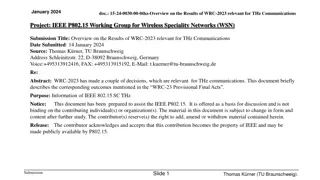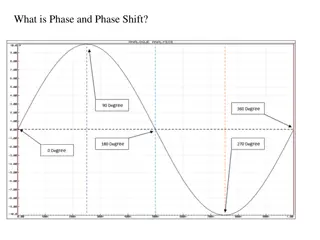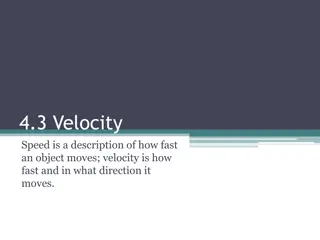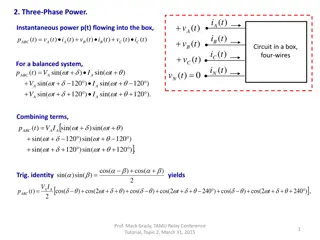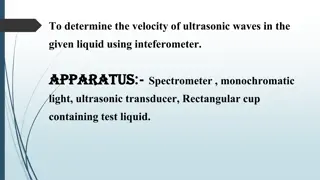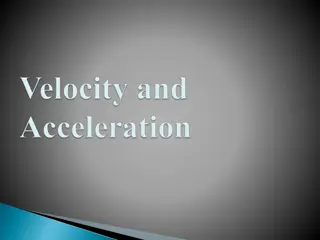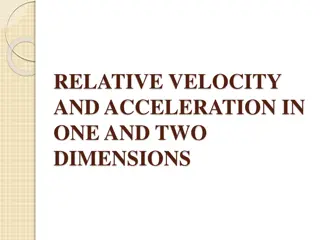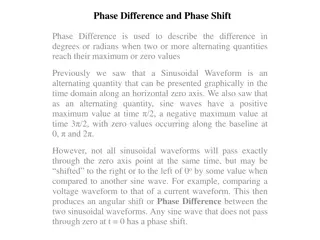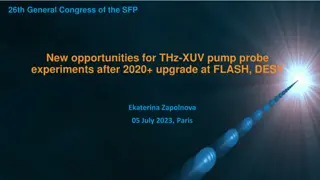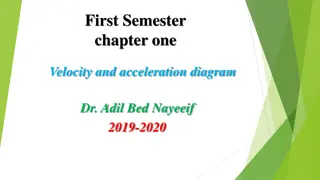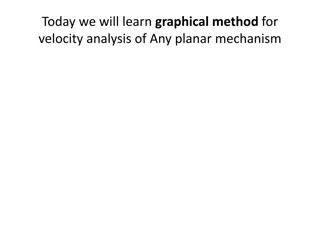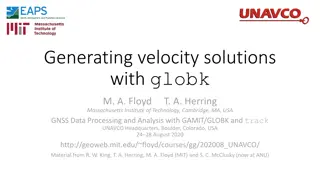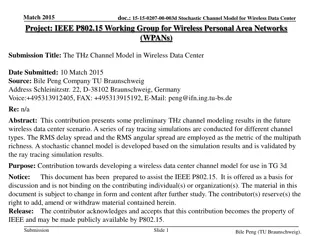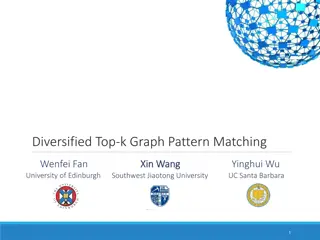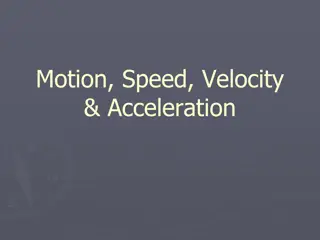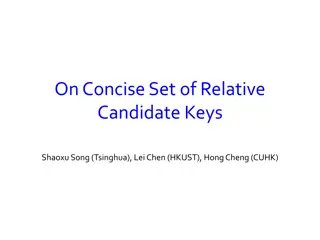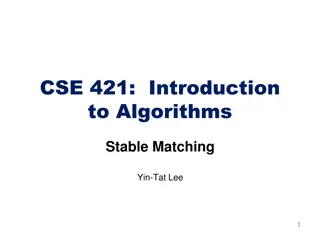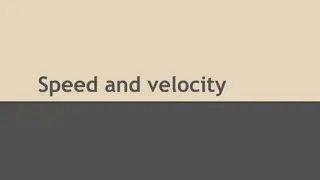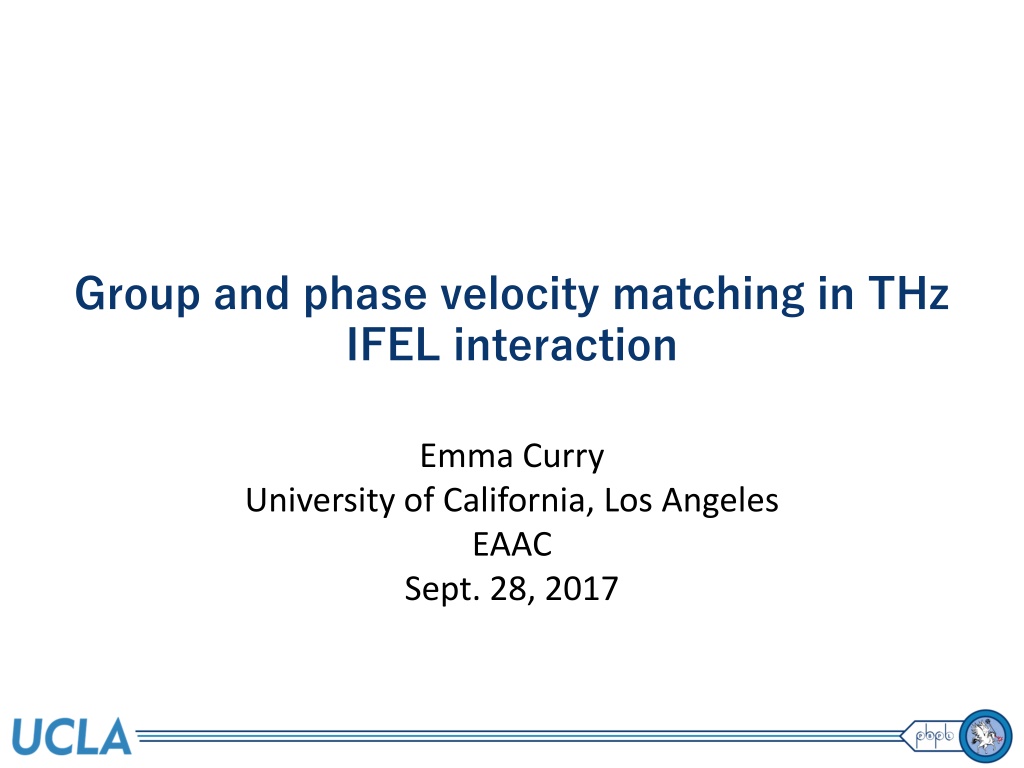
Velocity Matching Techniques in THz IFEL Interaction
Explore the concept of group and phase velocity matching in Terahertz (THz) Inverse Free Electron Laser (IFEL) interaction. Learn about zero-slippage IFEL interaction, beam manipulation, undulator, and waveguide components. Discover the innovative methods used to achieve IFEL resonance and maximize THz field efficiency.
Download Presentation

Please find below an Image/Link to download the presentation.
The content on the website is provided AS IS for your information and personal use only. It may not be sold, licensed, or shared on other websites without obtaining consent from the author. Download presentation by click this link. If you encounter any issues during the download, it is possible that the publisher has removed the file from their server.
E N D
Presentation Transcript
Group and phase velocity matching in THz IFEL interaction Emma Curry University of California, Los Angeles EAAC Sept. 28, 2017
Acknowledgments 1Department of Physics and Astronomy, UCLA, Los Angeles, California 90095, USA Prof. Pietro Musumeci1 Asst. Prof. Jared Maxson1,2 2Cornell Laboratory for Accelerator-Based Sciences and Education, Cornell University, Ithaca, New York 14853, USA Prof. Avraham Gover3 3Department of Physical Electronics, Tel Aviv University, Tel Aviv 69978, Israel Siara Fabbri1 Funding
Outline Motivations Zero-slippage IFEL interaction Tunable IFEL resonance Longitudinal phase space measurements Bunch length compression Conclusions
THz-driven beam manipulation Motivations Sustain high gradient fields, orders of magnitude larger than conventional RF based accelerators Large phase acceptance and guiding structures compared to optical frequencies Single cycle THz pulse from optical rectification Synchronized to electron beam Extend duration of interaction? Total e-bunch capture High acceleration gradient Low Frequency High Frequency THz field Fabia ska, J., et al. Scientific Reports 4 (2014). Fallahi, A., et al. PRSTAB 19, 081302 (2016). Nanni, E., et al. Nature Comm. 6 (2015).
Zero-slippage IFEL interaction Phase velocity matching for IFEL resonance Single frequency ? ? = ?? ??+ ?? THz Electron beam Group velocity matching for zero-slippage interaction Tangential intersection indicates broadband interaction Extend to meter-scale ??=? ? ? = ?? ??? Two degrees of freedom: Tune electron beam energy to achieve IFEL resonance Adjust waveguide aperture to control THz group velocity matching CPPWG Undulator Magnets
Undulator and Waveguide Undulator 3 cm period Halbach array 0.45 T peak field on-axis 10 periods with additional entrance and exit section Curved Parallel Plate Waveguide (CPPWG) Composed of two distinct aluminum plates fabricated at UCLA using conventional machining techniques Plate spacing 1.5 4 mm range, limited by undulator magnet gap Plate curvature acts as focusing element to minimize diffraction losses through gap Vertically polarized THz focused into waveguide entrance using off-axis parabolic mirror Mounting plates Magnet arrays
Undulator and Waveguide CPPWG mount Undulator 3 cm period Halbach array 0.45 T peak field on-axis 10 periods with additional entrance and exit section Curved Parallel Plate Waveguide (CPPWG) Composed of two distinct aluminum plates fabricated at UCLA using conventional machining techniques Plate spacing 1.5 4 mm range, limited by undulator magnet gap Plate curvature acts as focusing element to minimize diffraction losses through gap Vertically polarized THz focused into waveguide entrance using off-axis parabolic mirror CPPWG
PEGASUS beamline Beam Parameters Bunch energy Undulator period Undulator parameter, K 1.27 # of undulator periods CPPWG spacing Plate curvature radius Peak frequency Pulse energy Beam control Solenoid focusing and steering magnets align beam through hole in OAP and CPPWG Diagnostics Vertical deflection in X-band cavity maps longitudinal position on the y-axis Horizontal dispersion in dipole magnet maps beam energy on the x-axis Intensified CCD camera 4-9 MeV 3 cm 10 1.8-2.7 mm 2 mm 0.8 THz 1 J THz source Pulse-front-tilted optical rectification of 800 nm laser in sLN
Tunable IFEL resonance Resonant beam energy shifts with CPPWG spacing Larger spacing smaller resonant energy THz phase velocity decreases Consecutive beam images show energy spectrum for THz off and on Small vertical slice used to determine the FWFM of the distribution Timing between THz and beam synchronized via generation by same laser pulse Measured up to 150 keV energy modulation CPPWG spacing 2.4 mm 1.8 mm Lines indicate the FWFM energy modulation from simulation
Longitudinal Phase Space Measurements Beam energy on the x-axis and temporal position on the y-axis Energy modulation reflects the waveform of the evolving THz pulse See dispersed THz profile predicted by EOS measurements Peak-to-peak energy modulation vs. THz pulse energy shows expected linear relationship Time-of-arrival jitter evident in the position of the energy modulation with respect to the electron beam 400 fs rms temporal jitter for PEGASUS
Bunch length compression Short electron beam injected at the zero-crossing of waveform for energy chirp Plot RMS bunch length vs. energy spread TOA jitter results in wide range of THz injection phase Color indicates the energy-position correlation in the LPS image Decompressed beam has both large energy spread and bunch length Compression by factor of two: decreases to a minimum of 200 fs still shows positive energy correlation Undulator to streak camera distance (1 m) too short for maximum compression Timing synchronization
Future Work Longitudinal Profile Diagnostic THz amplification Proof-of-principle THz-streaking experiment planned at PEGASUS for later this year Pick off the THz pulse at exit of the CPPWG Real-time interferometer for single shot THz pulse measurement CPPWG and undulator assembly built for IFEL experiment will be re-used Thangaraj, J., et al. "Demonstration of a real-time interferometer as a bunch-length monitor in a high-current electron beam accelerator."Rev. Sci. Instrum. 83.4 (2012): 043302. Increase bunch charge TE02 mode excited in CPPWG for interaction between transversely oscillating beam trajectory and longitudinal B-field Simulate tapered undulator configuration For more information see Curry et al, New J. Phys. 18, 113045 (2016) Curry et al, Nucl. Instr. Meth. Phys. Res. A (2017).
Conclusions Group and phase velocity matching achieves a broadband interaction with an initially near-single cycle THz pulse over 30 cm TOA synchronized via generation from same laser pulse Resonant beam energy shifts with CPPWG spacing for tunable IFEL interaction Measured up to 150 keV energy modulation Longitudinal phase space measurements show well-defined sinusoidal energy modulation Bunch compression by factor of two Scales linearly with THz field Time-stamping with energy modulation Future Directions THz-driven longitudinal profile diagnostic CPPWG Undulator Magnets THz amplification via FEL interaction

